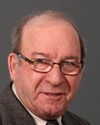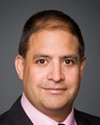To respond, I think your question was that, looking into the future, there could be the possibility of different organizations doing the same thing. We as a board looked at that issue when we first got together. Obviously, having a First Nations Statistical Institute means there is a lot of interest in first nations data; and if there is a large interest, then there are other people who are interested in doing the same thing. So there are, across the country, a lot of data sources, a lot of statistics, a lot of information dealing with first nations.
As an organization focused specifically on first nations, we interpreted our role as that of bringing a higher level of precision and certainty to the information that exists out there.
As we go forward, we are very cognizant of the fact that others have activities in the same area, and we will work with them to ensure that we're not stepping on each other's toes, but work as best we can in conjunction or coordination with them.
So the direction from the board to me, initially, was to ensure that we have good relations with those who are in the area already, such as Statistics Canada. And we are starting to do that. As I mentioned, we have a very regular meeting—




